The Forbidden City Posted by sasha on Nov 12, 2015 in Uncategorized
Last month, we took a closer look at Tiananmen Square and the many landmarks surrounding it. If you ever find yourself in Beijing visiting Tiananmen, the logical next step on your sightseeing tour is right across the street – the Forbidden City. One of the most famous places in all of China, this historical complex actually goes by two different names – 紫禁城 (zǐ jìn chéng) can be translated as “Purple Forbidden City,” but it’s more often referred to as 故宫 (gù gōng), meaning “Former/Ancient Palace.” If you’re wondering where the purple comes from, that’s an interesting history lesson in and of itself. In traditional Chinese astrology, it was believed that the Celestial Emperor resided in a palace on the “purple star” (ancient Chinese name for the North Star). Thus, the terrestrial emperor would reside in a purple palace as well.
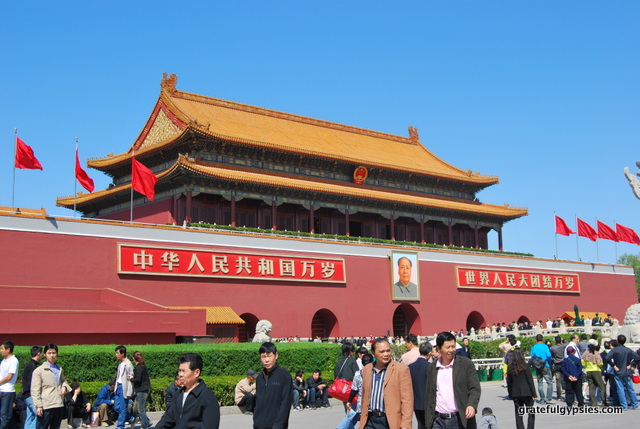
Pass through the Gate of Heavenly Peace to enter the palace.
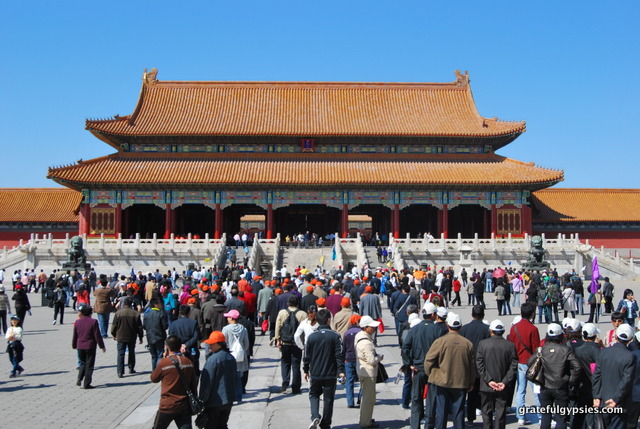
Got your matching hats?
Once home to the emperors of the Ming and Qing Dynasties, it served as the political center of China for just under 500 years. It’s no longer forbidden, and this UNESCO World Heritage Site received 15 million visitors in 2014 alone. Such massive tourist numbers are of concern for the longevity of this historic monument, and measures were put in place to limit daily visitors to 80,000 in an attempt to better preserve it. With the 600th anniversary of the Forbidden City approaching in 2020, China hopes to develop it into a first-class museum in time to celebrate.
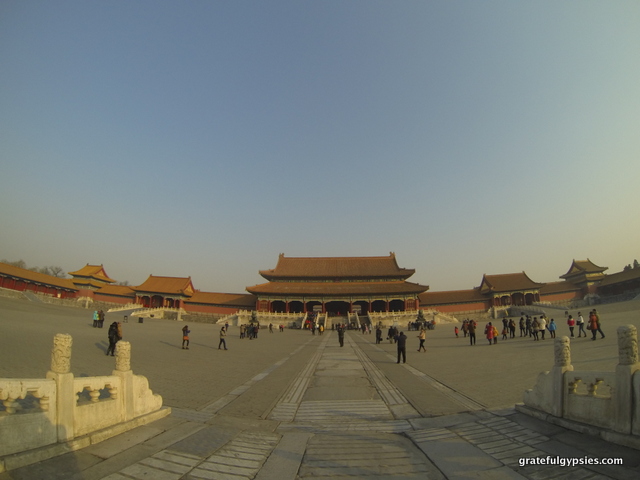
It truly is massive.
A visit to the Palace can be quite intimidating for first-time visitors – it’s a massive complex spread out over nearly 180 acres containing some 8,000 rooms. Once you pass through the Gate of Supreme Harmony, the sheer immensity of it all really hits you. Walking through the entire palace takes a couple of hours, and you’ll barely even scratch the surface of it as many rooms are completely closed off. Imagine having this entire walled palace to yourself, complete with a staff of thousands working for you. Indeed, it must have been good to be the emperor.
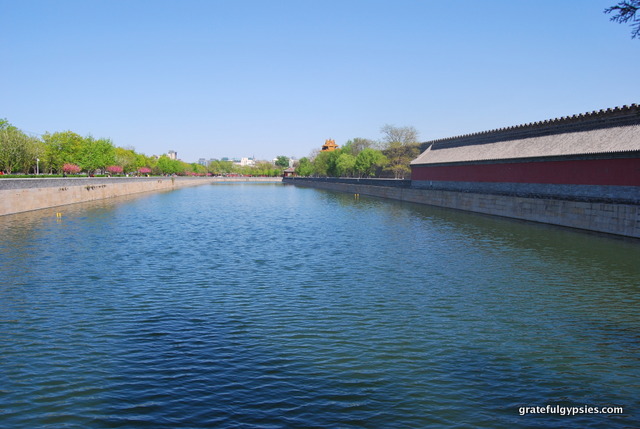
Cross the moat, climb the wall, evade the guards… probably not.
Back in imperial times, it truly was forbidden to enter. Even if you wanted to, you would have had a hard time crossing the moat, climbing the 10-meter high defensive walls, and getting past all the guards.
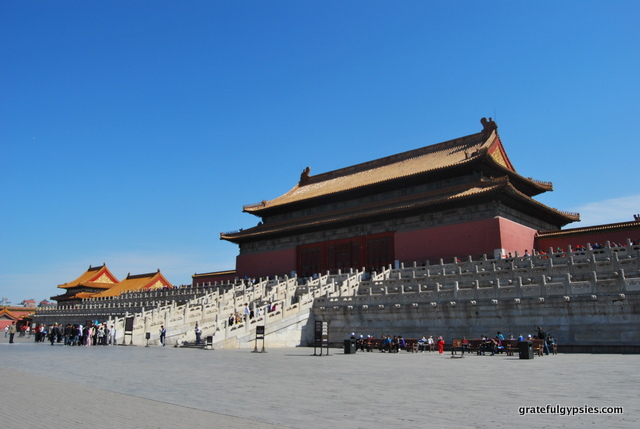
A rare blue-sky day in Beijing.
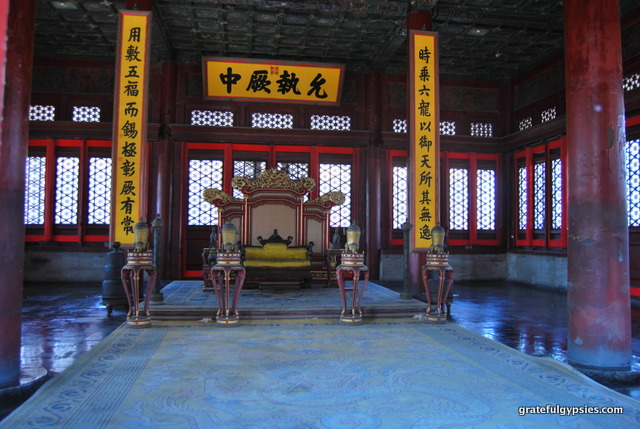
A throne in one of the many halls.
The Forbidden City is divided into two parts – the Outer Court (外朝 – wài cháo) and Inner Court (内廷 – nèi tíng). The Outer Court was used for ceremonial purposes and as a place for the emperor to exercise his power, while the Inner Court was the residential area for the royal family. From its construction up until 1924 when the last one was driven out, a total of 14 emperors called the Forbidden City home.
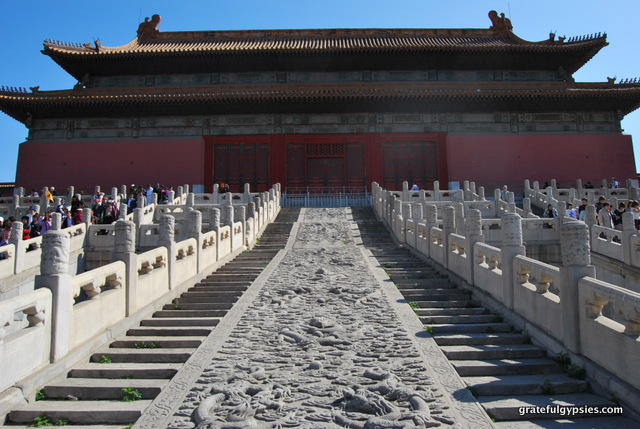
A great example of Chinese architecture.
As previously mentioned, the Forbidden City was granted UNESCO status for representing “masterpieces in the development of imperial palace architecture in China.” With so many soulless concrete and steel monoliths going up all over Beijing and China in general, it’s a great escape to explore this traditional palace for a while.
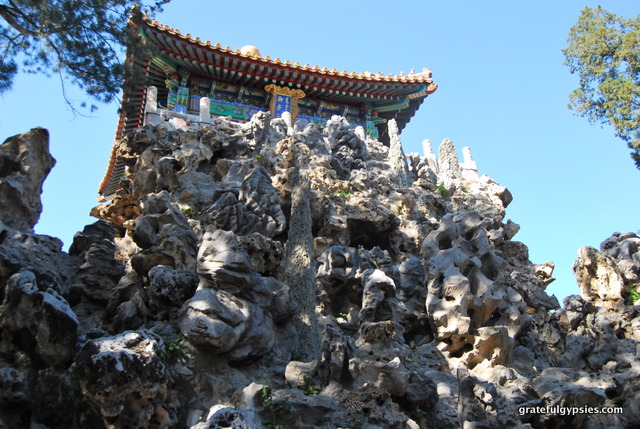
Part of the Imperial Garden.
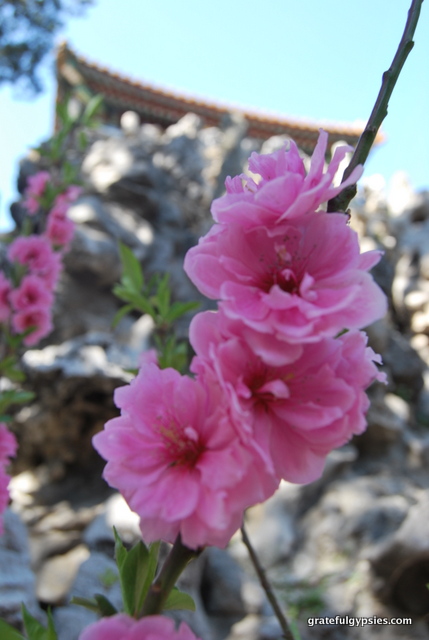
Stop to smell the flowers.
One of the highlights of touring the palace grounds is taking in the Imperial Garden at the rear of the complex. If you’ve got enough energy, it’s well worth it to cross the street out the north entrance of the Forbidden City and pay a visit to Jingshan Park (景山公园 – jǐng shān gōng yuán). Not only is this a great place to experience the local culture, but it also offers the best panoramic views of the palace.
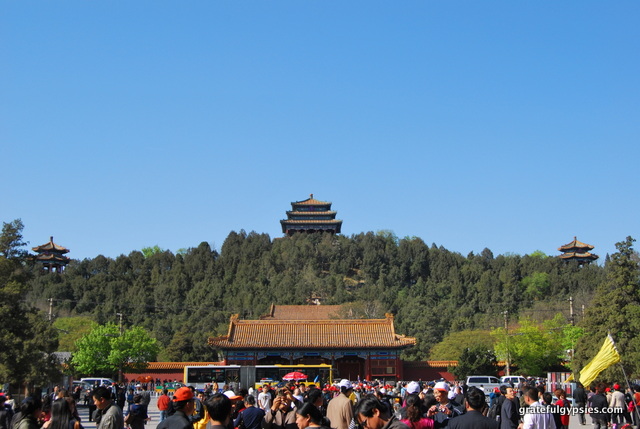
Climb up to the top…
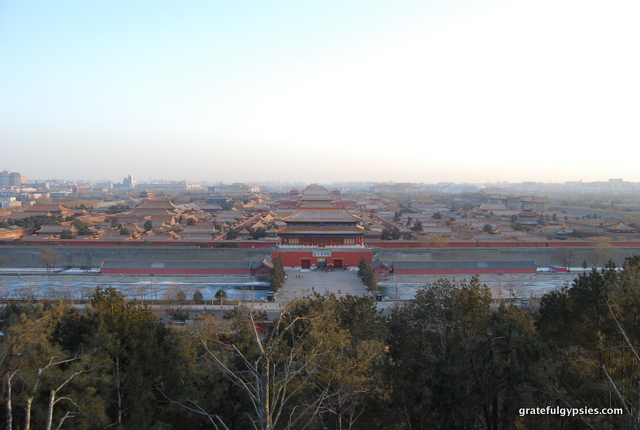
…and enjoy this view.
While it may seem like a lot, it’s definitely doable to visit Tiananmen, the Forbidden City, and Jingshan in one day. Take your time, break for tea (this is China, after all), grab some lunch somewhere along the way, and enjoy taking in some of Beijing’s most historic and important places.

Build vocabulary, practice pronunciation, and more with Transparent Language Online. Available anytime, anywhere, on any device.
About the Author: sasha
Sasha is an English teacher, writer, photographer, and videographer from the great state of Michigan. Upon graduating from Michigan State University, he moved to China and spent 5+ years living, working, studying, and traveling there. He also studied Indonesian Language & Culture in Bali for a year. He and his wife run the travel blog Grateful Gypsies, and they're currently trying the digital nomad lifestyle across Latin America.




Leave a comment: